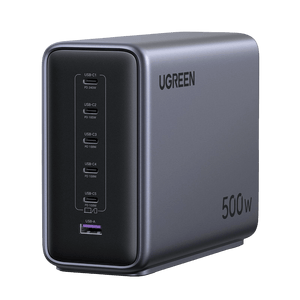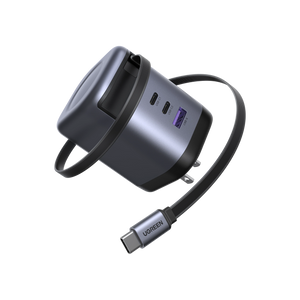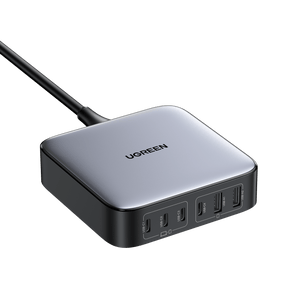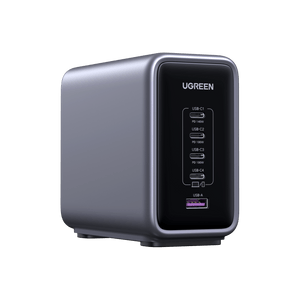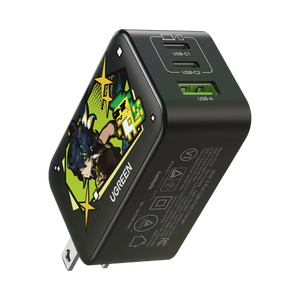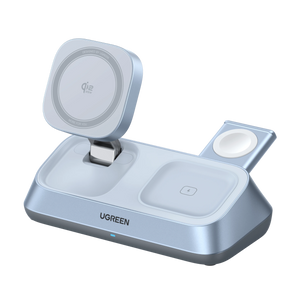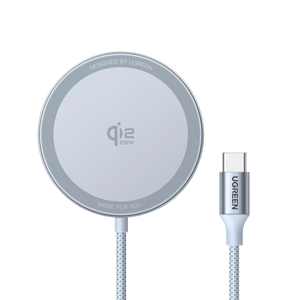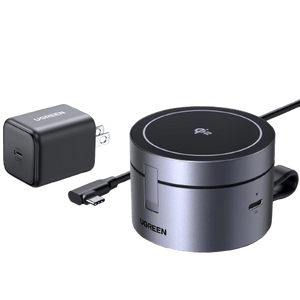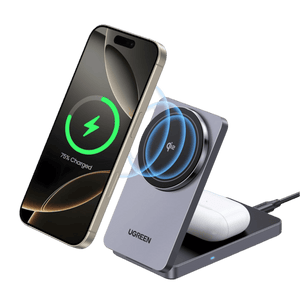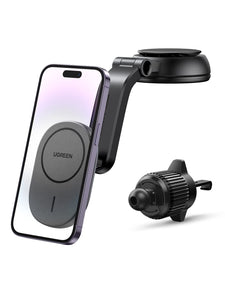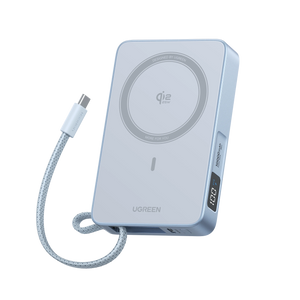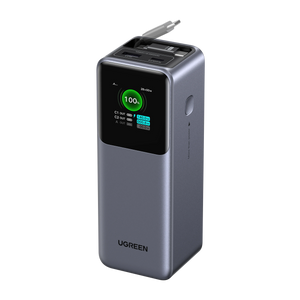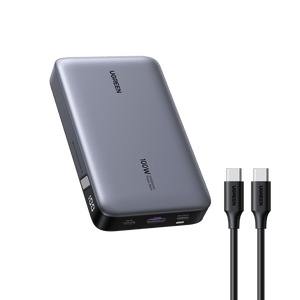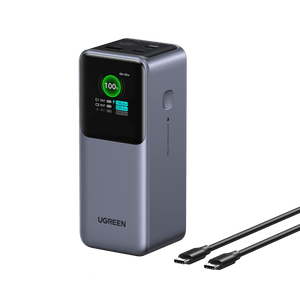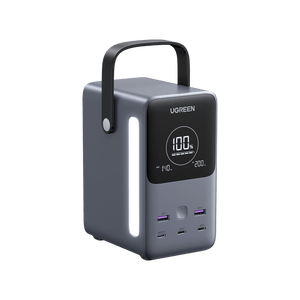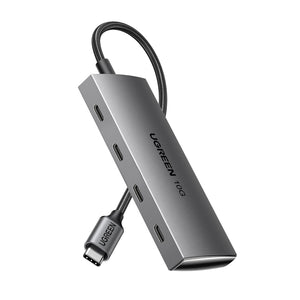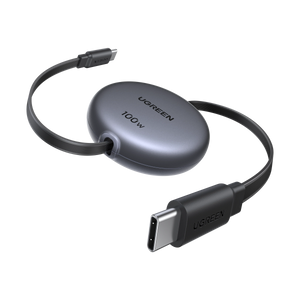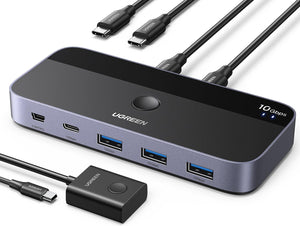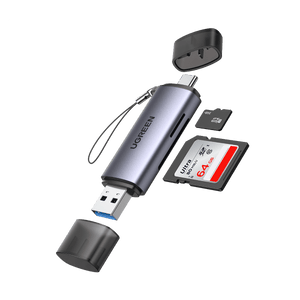LiFePO4 Battery: What You Need to Know (Comprehensive Guide 2025)
What is LiFePO4 Battery
LiFePO4 battery is rechargeable Lithium-Ion Phosphate battery that uses lithium iron phosphate as the cathode material. Their unique chemistry gives them an edge over other rechargeable batteries, making them the preferred choice for major energy storage needs.
LiFePO4 is famous for its superior durability, efficiency, adaptability, safety, and environmental friendliness. In this article, we will be diving into the intricacies of a Lithium Iron Phosphate battery, so keep reading to find out why this battery is the top choice for many.

Key Takeaways
- LiFePO4 Batteries Excel in Safety and Stability: LiFePO4 batteries, utilizing lithium iron phosphate as the cathode material, stand out for their exceptional safety features, including a low risk of thermal runaway and hazardous combustion. This stability makes them a preferred choice for applications like electric vehicles and portable electronics, where safety is paramount.
- Versatile Applications Across Industries: These batteries power a wide range of systems, from off-grid setups like remote cabins and camping stations (e.g., Ugreen portable power stations) to electric vehicles (e.g., Tesla), telecom base stations, and medical devices. Their adaptability stems from high efficiency, long cycle life, and ability to perform in harsh conditions.
- Unmatched Longevity with 2000–7000 Cycles: LiFePO4 batteries boast an impressive cycle life, enduring 2000 to 7000 charge-discharge cycles before significant capacity degradation. This durability, exemplified by products like the Ugreen power station with over 3000 cycles, makes them a sustainable and cost-effective solution for long-term energy needs.
- Eco-Friendly and Ethically Sourced: Unlike other lithium-ion batteries containing cobalt or toxic materials like cadmium, LiFePO4 batteries are free of hazardous substances and use ethically sourced materials. Their recyclability and compliance with environmental standards (e.g., RoHS) enhance their appeal as a green energy storage option.
- Superior Performance Over Alternatives: Compared to lead-acid, traditional lithium-ion, and nickel-cadmium batteries, LiFePO4 offers advantages like higher energy density, lighter weight, and no memory effect. While they may have a lower nominal voltage (3.2V per cell) and higher initial cost, their efficiency, fast charging, and minimal maintenance outweigh these drawbacks for most uses.
A Brief History of LiFePO4
LiFePO4 was first identified in the early ‘90s by Dr. John Goodenough at the University of Texas when he and his team pin-pointed lithium-ion batteries as potential cathode materials for lithium-ion batteries.
Though the discovery goes way back, widespread use didn’t begin until the 2000s, when battery technology and the demand for sustainable energy solutions became more prominent. Some manufacturers like A123 Systems played a significant role in developing and bringing LiFePO4 batteries to the limelight.

Applications and Usage of LiFePO4 batteries
Because of their efficiency and longevity, LiFePO4 or Lithium Iron Phosphate batteries are used in diverse industries and technologies. Some common applications are:
Off-Grid and Remote Power systems
Camping setups, villages, remote cabins, and remote sensing equipment all make use of LiFePO4 batteries to store energy from renewable sources, or generators. LiFePO4 batteries provide reliable power when the grid is unavailable in such settings.
UGREEN portable power station is a reliable remote power system that makes use of LiFePO4 batteries and offers 3000plus life cycles and is 6 times long-lasting.
Electric Vehicles (EVs)
LiFePO4 batteries have a very high-power output, safety features, and long cycle life, so they are used in electric vehicles. To improve their performance range, EV companies like Tesla have integrated LiFePO4 batteries into their EVs.
Portable Electronics
LiFePO4 batteries are used to power various portable devices, including smartphones, laptops, power banks, and tablets. This is due to their compact size, safety, longer runtimes, and extremely high energy density compared to other Lithium-ion batteries.
Renowned smartphone companies like Xiaomi use LiFePO4 batteries in all their devices for enhanced safety and better performance.

UGREEN portable power stations also use LiFePO4 batteries to ensure maximum functionality and a much longer life cycle.
Storing Renewable Energy
Renewable energy is obtained from solar and wind power installations, and one of the safest ways to store it for later use is a Lithium-Iron Phosphate battery. It is very reliable and efficient for integrating renewable energy into these different grids, so many people depend on LiFePO4 for this.
Uninterruptible Power Supply (UPS)
UPS systems provide backup power during outages or fluctuations in the main power supply of a building, and they make use of LiFePO4 batteries. Their long lifespan and efficiency make them ideal for UPS systems.
Marine and RV Power Systems
Marine and RV power systems require extended off-grid power usage, and only LiFePO4 batteries have proven to be efficient enough for both systems. They are preferred because they offer lightweight and long-lasting energy storage for these systems. They are also mainly used in marine electric propulsion systems.
Telecom and Base Stations
The telecommunications industry wildly uses Lithium-Iron Phosphate batteries in their base stations and cell towers. This is because they can experience harsh operating conditions and still run efficiently, offering longer life cycles and high energy density.
Electric Tools
Due to their high-power density, many cordless electric tools rely on LiFePO4 batteries to function efficiently. They help to provide longer runtime for the devices and a faster charging process, unlike other lithium-ion batteries.
Energy Storage Systems
Large-scale energy storage systems require a stabilized grid, and LiFePO4 batteries offer them the stability and efficiency they need to manage peak demands and balance fluctuations.
Medical Devices
Because of their reliability, medical devices like defibrillators, insulin pumps, and other medical monitoring devices use LiFePO4 batteries. They offer a stable supply of power and a long-life cycle for critical medical applications.
How Long Does a LiFePO4 Battery Last?
LiFePO4 batteries are popular for their unique cycle life- the number of charge-discharge cycles a battery can undergo before its overall capacity degrades significantly. When it comes to cycle life, Lithium-Iron Phosphate batteries exceed other battery types by a mile. An adequately maintained LiFePO4 battery can last between 2000 to 7000 cycles or more depending on the operating conditions and the depth of discharge.
Their longevity and efficiency make them sustainable and economically viable for long-term energy storage needs or applications. The Ugreen power station embodies this exceptional feature with 3000 plus cycle life and is six times long-lasting.
Advantages of LiFePO4 Battery
LiFePO4 offers many advantages compared to other batteries, which is why they have become the premier choice for many industries. Now that we have answered the question ‘what is a LiFePO4 battery,’ let’s talk about what gives them an edge over other lithium-ion batteries.
Safety
LiFePO4 batteries are very stable and have a low risk of thermal runaway or hazardous combustion making them safer than other lithium-ion batteries. This is crucial for applications like electronics and electric vehicles that people interact with daily.
High Charging and Discharging Efficiency
Most lead acid batteries have a charge and discharge efficiency of 80 percent while LiFePO4 batteries have as high as a 90% efficiency. When LiFePO4 batteries are charged, the energy from the power source is converted and stored within the cells of the battery.
The high charging efficiency of the battery ensures that the energy provided during the charging process is stored without losses. The Ugreen PowerRoam Power Station has a very high charging and discharging efficiency which makes it a top choice when it comes to portable power stations.
Wide Temperature Range
Lithium-Iron Batteries perform well at the most extreme temperatures making them suitable for harsh weather conditions. This advantage is valuable for applications in major remote areas and harsh climates that are not connected to the grid. They function excellently in temperatures as low as –20°C and as high as 50°C.
Environmentally Friendly
LiFePO4 batteries do not contain toxic or heavy hazardous materials like cadmium or lead, increasing their recycling potential. They also follow all European RoHS requirements for usable batteries. Many organizations have made it their duty to collect used lithium-iron phosphate batteries and recycle them, so you don’t have to.
Long Battery Cycle Life
Lithium-Iron Phosphate batteries have a life cycle of more than 2000 times, while other lead acid batteries have a cycle life of 300 times. If properly maintained, a LiFePO4 battery can last for as long as 8 years.
Extremely Lightweight
LiFePO4 batteries weigh one-third of regular batteries that serve the same purpose, even though they have more capacity of about 10AH to 1000AH. This high power-to-weight ratio leads to lesser battery packs and in essence lower wasted space- highly beneficial for boats and remote setups. This advantage makes the Ugreen power station excellent for remote lifestyle and camping applications.

Fast Charging
LiFePO4 batteries have lesser downtimes thanks to their support for rapid charging. This improves the overall user experience and increases their efficiency for use. The Ugreen portable power station is a perfect example of this reduced downtime and enhanced convenience advantage.
No High Maintenance Needed
LiFePO4 batteries are self-sufficient and do not need to be serviced to increase their life span or extend their service life. Additionally, they barely suffer from the memory effect of incomplete discharge before it recharges which affects many lithium-ion batteries.
Ethically Sourced Materials
Lithium-Iron Phosphate batteries do not make use of cobalt, a fundamental material in other lithium-ion batteries. More than 70% of the world’s cobalt is sourced from the Democratic Republic of Congo under inhumane conditions.
Many NGOs and human rights activists advocate for better conditions in these areas, including a clampdown on forced child labor. LiFePO4 batteries on the hand are sourced ethically with no background or history of inhuman activities, making it a safer choice for those who are ethically conscious.
LiFePO4 Battery vs Lead-Acid Battery
Lithium-Iron Phosphate batteries and lead acid batteries are energy storage solutions with distinct advantages and disadvantages. But a lot of factors make one more preferred than the other.
When compared to lead-acid batteries, LiFePO4 batteries have a higher energy density so are able to store more energy per unit volume and weight. For the same energy capacity, LiFePO4 batteries will result in a smaller battery pack than Lead-acid batteries. However, Lead-acid batteries are heavier and bulkier. The Ugreen Power Roam Power Station1200W uses LiFePO4 batteries, which makes it very portable and easy to carry.
In terms of cycle life, Lead-acid batteries reduce in capacity with each charge-discharge cycle, but discharge cycles do not significantly affect LiFePO4 batteries. After 300 to 500 cycles, Lead-Acid batteries begin to lose their ability to store energy.
LiFePO4 Battery vs. Lithium-Ion Battery
Lithium-ion and LiFePO4 batteries are different types of rechargeable lithium-ion batteries, but their difference is their cathode materials. LiFePO4 batteries are considered safer than lithium-ion batteries because of their stable chemistry and the lesser risk of thermal runaway or overheating.
Another factor to consider is the energy density of both batteries. LiFePO4 batteries have a lower energy density than many lithium-ion batteries. In addition to their density, LiFePO4 batteries have slightly longer charging times because they require more conservative charging profiles. However, lithium-ion batteries are prone to overheating even though they may charge faster due to their high energy density.
In addition, Lithium-ion batteries are considered hazardous and toxic to the environment because most contain cobalt, a possible health hazard.
LiFePO4 Battery vs Nickel-cadmium (NiCd) Battery
NiCd batteries are also a type of rechargeable battery used for diverse applications, but they contain a toxic substance known as cadmium. They are very hard to recycle, and when they are disposed of improperly, they can lead to health complications or environmental contamination.
NiCd batteries have a good cycle, but they still cannot be compared to LiFePO4 batteries. One major disadvantage of nickel-cadmium batteries is that they suffer from the ‘memory effect’- this means that they ‘remember’ the previous partial discharge and lose capacity if they are not fully charged. LiFePO4 batteries do not lose capacity if they are recharged before they are fully discharged.
Regarding portability, LiFePO4 batteries are lighter and more suitable for carrying around, NiCd on the other hand, are very heavy due to their primary composition. LiFePO4 batteries are more expensive than NiCd batteries, but they give more than enough value for their money. They are long-lasting and better performing than NiCd batteries, so you’ll enjoy a long-term return on your investment.
FAQs about LiFePO4 Battery
Are LiFePO4 batteries safe?
LiFePO4 batteries are one of the safest types of batteries out there. The combination of non-toxic chemistry, superior thermal stability, and the lesser risk of thermal runaway make them a very safe option for diverse applications. Compared to other Lithium-ion batteries, LiFePO4 is considered the safest. Safety is one of the reasons why LiFePO4 batteries were developed and adopted as an efficient alternative to traditional Lithium-ion batteries.
What are the disadvantages of LiFePO4?
As much as LiFePO4 batteries offer many advantages, they also have a few disadvantages, some of which include their high cost, long charging periods, and limited high-current applications. These disadvantages can all be managed one way or another, which is why LiFePO4 is still the popular choice of battery in various industries.
What is the problem with the LiFePO4 battery?
Lithium-Iron Phosphate batteries usually have a low nominal voltage compared to other lithium-ion batteries, and this can impact their use in specific applications that require high voltage levels. They typically contain 3.2 volts per cell, while other batteries contain 3.6 to 3.7 volts per cell. This means that more cells will have to be used in a series to get the desired voltage level for higher voltage applications, leading to larger and heavier battery packs.
What does LiFePO4 mean on a battery?
LiFePO4 on a battery stands for Lithium Iron Phosphate, and this refers to the chemical composition of the battery’s cathode material. Here’s the full meaning of LiFePO4;
Li- Li stands for lithium, which is one of the most fundamental elements in the battery’s anode.
Fe- Fe stands for iron, another fundamental element used in the cathode of the battery. Iron combines with phosphate to form the lithium iron phosphate (LiFePO4) battery.
PO4: PO4 stands for phosphate, a chemical compound that combines four oxygen atoms with one phosphorous atom. In LiFePO4 batteries, phosphate forms the backbone of the cathode materials and binds all the iron and lithium atoms together. It is this chemistry that offers LiFePO4 its many advantages.
Are LiFePO4 batteries better for the environment?
LiFePO4 batteries are considered better for the environment because of their non-toxic chemistry, reduced risk of thermal runaway, longer cycle life, high energy efficiency, and better recycling potential. Their complete lack of toxic materials, such as cobalt or cadmium, which can be found in other lithium-ion batteries, makes them a safer choice for the environment. In addition, their long cycle life means the need for replacement will be less frequent, thus reducing the need to send more batteries to landfills.





